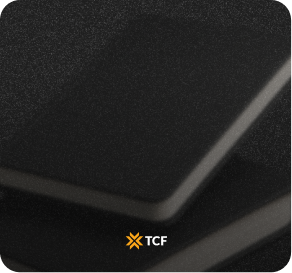Crowdfunding has always balanced data with intuition, and few people understand that intersection better than Shavarsh Zohrabyan, Head of the Research & Market Analysis Department at TCF.
After completing his MBA in Europe, where he wrote his master’s thesis on Kickstarter and Indiegogo, Shavarsh made the decision to turn research into real-world results. Since joining TCF in 2020, he’s led a team that’s mapped out industry-defining statistics, forecasted major trends, and uncovered multiple record-breaking products that went on to raise millions.
We sat down with him to talk about how 2025 reshaped the crowdfunding landscape, which categories are gaining (or losing) momentum, and what creators should expect as we step into 2026.
Jasmine: How would you describe 2025 for crowdfunding overall?
Shavarsh: It was a very intense and innovative year.
Crowdfunding thrives on fresh, problem-solving ideas, and this year proved that again. We saw a huge wave of products integrating AI, which quickly became a driving force behind many new categories.
Rings that track health data were especially dominant. They gather information on daily activity, summarize your health status, and offer AI-based recommendations. We managed a campaign in this niche that raised over a million dollars, and there were other successful ones in the market as well.
Jasmine: Which crowdfunding categories stood out the most, and which ones started losing momentum?
Shavarsh: Gaming remains a steady leader. Tabletop and video games always perform well and continue to attract loyal communities. But categories that failed to adapt to AI integration lost traction. Think of older physical gadgets that used to collect and analyze data manually, they’ve been replaced by AI-powered devices that do it faster and smarter.
Another noticeable decline came from the outdoor and camping category. After the pandemic, these projects were booming, but that interest faded once travel and normal life resumed. It was predictable, honestly, because the trend was driven by the COVID lifestyle shift.
E-bikes are another interesting case. A few years ago, we saw campaigns raising $10 million or more, but in 2025 they struggled. Competition grew in ecommerce, where customers can now buy similar bikes directly without waiting months for a crowdfunding delivery.
Jasmine: Was there anything truly unexpected this year?
Shavarsh: Yes, sexual health and pleasure tech.
We expected growth in wellness categories, but not at this level. Products addressing sexual health through data tracking and AI-driven analysis became surprisingly popular. Equally surprising was the parallel success of devices designed purely for sexual pleasure. These campaigns are performing very well, and I believe this momentum will continue for at least another two quarters, into 2026.
Jasmine: Did your research process or performance metrics change this year?
Shavarsh: Definitely. In previous years, we focused mostly on how well a product solved a problem. Now we also evaluate its potential for AI integration.
For example, if someone launches a new camera that doesn’t include AI features, it instantly becomes less competitive. The same applies to almost every hardware category. A good product idea is not enough anymore, adaptability matters.
Jasmine: Looking ahead, what types of products do you think will have a breakout year in 2026?
Shavarsh: The sexual wellness category will continue to expand. It’s one of the fastest-growing spaces right now. And I’m also very confident about 3D printing. It’s already successful, but AI integration is making it far more accessible.
Previously, 3D printing required technical knowledge and experience, so the market was limited to enthusiasts and professionals. Now, AI tools simplify the process so anyone can use them without a technical background. That shift will dramatically broaden the audience and drive new product ideas in this niche.
Jasmine: How will AI change the way creators plan and launch campaigns?
Shavarsh: It’s already shortening timelines. Before, every element (copywriting, visuals, ad creative) was done manually. Now, with AI tools, those steps move faster. You still need human input to keep quality high, but the overall workflow is much more efficient.
This will especially help founders with engineering or technical backgrounds who often struggle with the marketing side. Miscommunication between engineers and marketing teams used to slow down campaign prep. Now, AI bridges that gap by making content creation and visualization easier to understand. In short, AI won’t replace human creativity, but it’s definitely speeding up every part of the launch process.
Jasmine: Beyond data, how much does gut feeling still influence your research and campaign selection?
Shavarsh: Data guides us, but it also sharpens intuition. When you’ve analyzed enough campaigns, you start developing a sense for what will resonate. Sometimes you look at a product, its color, design, timing, or strategy, and immediately sense its potential before the numbers even back it up.
Innovation is the clearest signal. If something feels genuinely new or claims a clear “first” or “best”, for example, the lightest, fastest, cheapest, or highest-quality version of its kind, it almost always performs well. That’s the gut check moment. Data later defines the scale of success, but intuition identifies the spark before the metrics do.
Jasmine: And what does your gut say about 2026 trends?
Shavarsh: My instinct says people will gravitate toward products that make them feel valuable again. AI brings efficiency, but it also creates anxiety about being replaced. Products that restore a sense of agency (tools that help people stay competitive, creative, or impactful) will stand out.
Imagine a new 3D printer that empowers designers to bring their ideas to life faster and better, or AI-enhanced tools that help entrepreneurs turn concepts into viable products. Anything that helps people reclaim their sense of value and influence in their work or community will be powerful in 2026.
Conclusion
As Shavarsh puts it, 2025 set the stage for a sharper, faster, and more data-driven crowdfunding era. Categories that evolve with AI are pulling ahead, while products that resist integration are falling behind. The industry’s next wave will be defined by accessibility: tools that make complex technology usable for everyday people, from AI-guided health rings to simplified 3D printing.
For creators, that shift means two things. First, innovation now depends as much on adaptability as on the idea itself. Second, the creative process is about to move at record speed. With AI cutting production and marketing timelines, the window between concept and campaign is narrowing fast.
If 2025 was the year crowdfunding learned to work smarter, 2026 will be the year it proves how far that intelligence can go.
[[cta2]]





.png)


.png)



